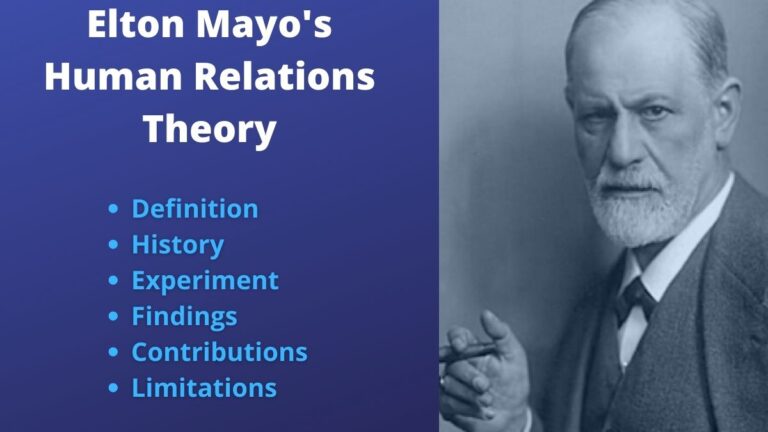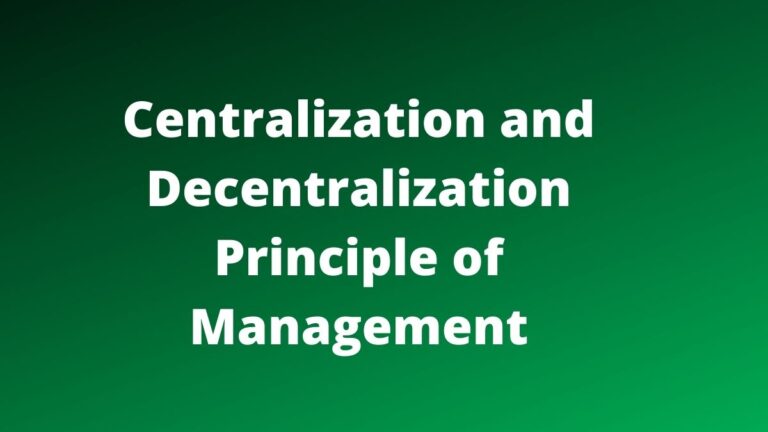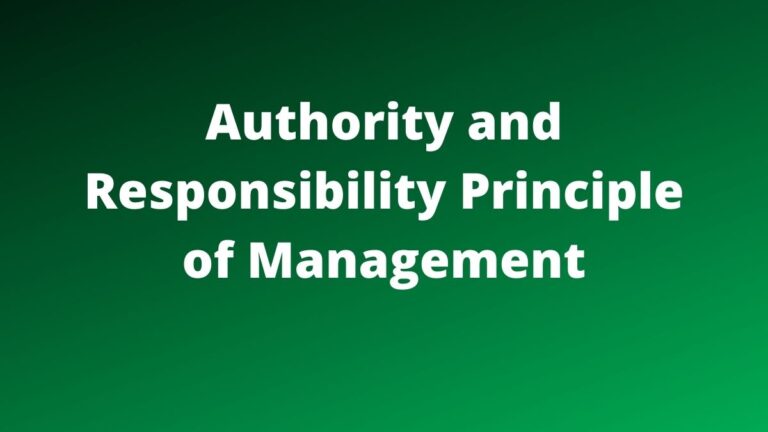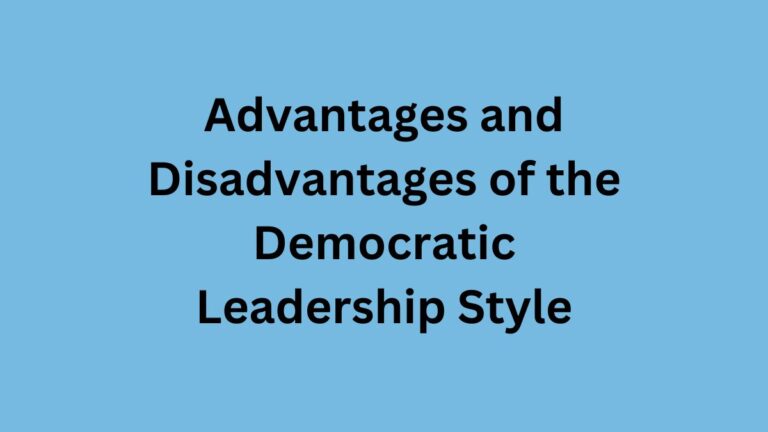What is Motivation? Definition, Features, Types, Importance, Theories, and Strategies
When every member of an organization contributes to organizational performance to the fullest, the organization becomes effective. The capacity and willingness of a workgroup’s members to work, as well as the technologies they utilize, determine how successfully an employee and their workgroups perform inside the organization. Ability depends on training, experience, and knowledge, whereas willingness is influenced by motivation. The willingness of employees is more important than the ability for competitive performance of the organization.
What is Motivation?
The term motivation has been derived from the word motive, which means the urge to or not to do something. As a noun, the word motive means objective, and as a verb motive means moving into action. Combining, motivation means the act of inspiring the people working in the organization to devote their one hundred percent effort toward work to accomplish organizational goals.
Motivation is an inner state that stimulates energy and creativity to do something better. It is a driving force as well as an activator of human behavior to achieve their goal. In organizational settings, it is also called workplace motivation.
It is a process of strengthening the internal force that drives people to act in such a way that all the desired levels of output will be achieved. It is the activity that creates a willingness and desire to do work effectively.
Motivation is the only way that employees of the organization perform their tasks at their fullest contribution. It is a process of creating a willingness to work and cooperate for the achievement of organizational goals.
Motivation reflects an impulse, drive, or urge to move in a specific direction to achieve specific needs or goals. It is concerned with how behavior gets started, energized, sustained, directed, and stopped. As a function of management, motivation inspires and impels people to take required actions by providing stimuli that satisfy their needs and motives.
Characteristics of Motivation
It is one of the important functions of management. It influences the behavior and actions of employees according to the requirements of the organization. It concentrates on the achievement of organizational goals. The following are its main features.
- It is a psychological process.
- It is an activator of human energy, behavior, or actions.
- It is a continuous process that remains till the organization exists.
- It is complex and unpredictable.
- It influences human behavior.
- It is pervasive in nature.
- It can be positive or negative as well as intrinsic or extrinsic.
Why Motivation Is Important in the Workplace?
It is the only tool to persuade employees to effective and efficient work performance which ensures the realization of organizational goals. Its importance can be discussed in the following points.
Related: Teams in the Workplace
Creates Willingness
Different types of monetary and non-monetary incentives are used to motivate employees. Employees are more willing to complete their work effectively and honestly when given such motivational aids. Their openness inspires creativity and initiative in them.
Improved Productivity
It motivates workers to make the best use of the organization’s resources. It improves the workers’ aptitude, potential, effectiveness, etc. On the one hand, this helps to reduce resource waste, and on the other, it raises the standard of the work. Therefore, motivation results in an increase in both employee and organizational productivity.
Develops Positive Attitudes
Motivated workers always have a favorable attitude toward the company and the management. Employees who are under or negatively motivated have bad attitudes toward management and are not actively involved in achieving organizational objectives.
When employees have a positive attitude toward the company, they prioritize the organizational goals over their own and their rivals.
Optimal Use of Resources
Motivated employees use organizational resources in such a way as their private properties. Because of optimal utilization of resources, employees get maximum satisfaction even from minimum resources. And, utilizing resources at the best level provides a chance for organizational success.
Remedy For Resistance to Change
For organizational as well as personal growth, change is a must. But most of the employees do not want to change in goals and their way of doing things. Motivation is an effective tool using which managers can change the behavior of employees to manage change.
Related: Strategies To Overcome Resistance To Change
Types of Motivation
Basically, there are two main types of motivations, they are:
Intrinsic Motivation
Such motivations arise internally from the individual. It includes the great desire and willingness of an individual to do something. For instance, when you are strongly motivated or excited to play a game, you will do it even without any reward or prize. In the workplace, such internally motivated employees are highly desirable.
Extrinsic Motivation
It is the opposite of intrinsic motivation. Such motivations arise in individuals by external factors. Such as praise, rewards, bonuses, recognition, etc. common tools to extrinsically motivate workers in the organization.
Theories of Motivation
There are a number of theories to motivate employees in the workplace. Some well known are mentioned below:
Need Hierarchy Theory
Need hierarchy theory is the most popular theory of motivation developed by the famous psychologist Abraham Maslow in 1943 A.D. This theory is based on human needs. Maslow classified human needs into a hierarchal form ranging from lower to higher order.
Physiological needs, security needs, social needs, esteem needs, and self-actualization needs are the five needs Maslow classified in his hierarchy. In essence, he believed that only unsatisfied needs motivate people.
As such, only after fulfilling a given level of need is satisfied, higher levels of new needs will emerge. Employees can be motivated by new or higher-order needs to fulfill.
Two-Factor Theory
Frederick Herzberg, an American Psychologist proposed a motivation theory called the two-factor theory, also called, the motivation-hygiene theory. He tried to identify what satisfied people and what did not at the job. He labeled job satisfiers as motivators and job dissatisfiers as hygiene or maintenance factors.
- Hygiene Factors – These are those factors that do not satisfy the person even if the factors are available but in the absence of such factors, they become dissatisfied.
- Motivating Factors – These are job satisfiers. In the presence of such factors, the satisfaction level of employees can be increased.
Theory X and Theory Y
A management professor, Douglas McGregor developed a motivation theory called theory X and theory Y. He classified employees into two types, called theories theory X and theory Y.
- Theory X – People who are classified as having a bad attitude toward work make up McGregor’s theory X. They naturally avoid the task, thus close monitoring is required for them to do it.
- Theory Y – McGregor’s theory Y is made up of individuals who have an optimistic outlook on their jobs. They naturally love to do tasks and while doing they give their optimum efforts.
Vroom’s Theory of Expectancy
Victor Vroom proposed the expectancy theory of motivation in 1964. Vroom explains people’s motivation is affected by the expectations they expect from the future or the tasks they do. The three components of expectancy theory include:
- Valence – It is the degree of significance a person has about the expected outcome.
- Expectancy – It is the belief that better efforts will give better results.
- Instrumentality – It is related to performance and outcomes. If you do your job well you will get a valid outcome – that may be a reward.
How To Motivate Employees?
In this competitive business world, motivated employees are key to organizational success but motivating employees is not easy. As we know, different people have different needs and motivating factors.
As such, as a manager, you should first identify what motivates your employees and what does not. Moreover, the following are some of the strategies you can use to motivate your employees.
- Maintain good communication.
- Ensure transparency.
- Ensure effective job design.
- Increase participation.
- Enable good pay.
- Provide job security.
- Increase competition.
- Delegate authority.
- Offer a career development option, etc.
Read Next: The 12 Ways To Motivate Employees
Sajan Kushmi is a content writer with more than 4 years of experience. He holds BIM Degree. He write on the topics related to Management, Marketing, and Entrepreneurship.






